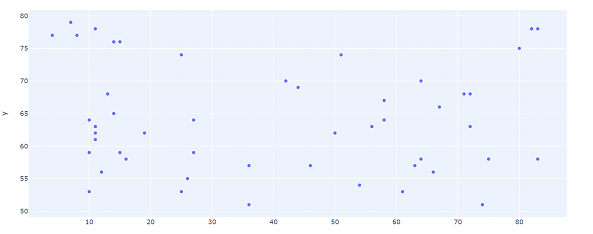
 Data Structure
Data Structure Networking
Networking RDBMS
RDBMS Operating System
Operating System Java
Java MS Excel
MS Excel iOS
iOS HTML
HTML CSS
CSS Android
Android Python
Python C Programming
C Programming C++
C++ C#
C# MongoDB
MongoDB MySQL
MySQL Javascript
Javascript PHP
PHP
- Selected Reading
- UPSC IAS Exams Notes
- Developer's Best Practices
- Questions and Answers
- Effective Resume Writing
- HR Interview Questions
- Computer Glossary
- Who is Who
Introduction to Plotly-online using Python
As we know, Python is a language widely used for Data Science and Data Analytics. Alongside libraries such as NumPy and Pandas, Plotly is another such library to represent given data in charts and graphs of all sorts. Let's learn more about this library!
Why a whole library exists in Python just for the sake of Data Representation?
Many might think of representing some data in a graph is simple, but that isn't simple at all! For small amounts of data, it is a somewhat easy task to plot graphs manually. But when dealing with large amounts of data, it becomes impossible for us to plot graphs manually and study them. For that, Plotly is there to help.
Plotly objects are very easy to use and it helps us to plot various types of graphs and charts like scatter plots, line charts, bar charts, pie charts, box plots, etc.
Installation of the Module
To install the Plotly module on your PC, go to the Python terminal and type ?pip install plotly' and ?pip install chart-studio'. This will take some time to get installed. After installation, we can move on to actually using some data and visually representing it!
Example
import numpy as np import random import plotly import plotly. express as px x = np.random.randint(low=1, high=84, size=50) y = np.random.randint(low=51, high=80, size=50) fig = px.scatter(x=x, y=y) fig.show()
This code demonstrates a graph plotted between random integers in the X and Y axis. Manually, it is tough to plot such a graph with consistency. Firstly, we import all the necessary modules required to plot the graph. X and Y are the coordinates and we use the "random" module to pick random integers within the mentioned ranges. Then the graph generated is given below:

Here, Python generates a graph with all the points plotted on it accurately. Now by using the 'chart_studio' module, we can use the graph more interactively on a website.
As mentioned earlier, this module can create a pie chart, histogram, etc. very well!
Why you should use Plotly for Data Representation?
We are aware of the "Matplotlib", isn't it? Matplotlib is mostly used to represent graphs which are not as complex. Where as in Plotly, the user can interact seamlessly with the represented data. It is very powerful when it comes to explaining and exploring data.
Unlike other Python Libraries, Plotly gives you total control over the data being plotted. Plotly is based on Pandas, so complex transformations of data can be made to it before actually plotting the data as a graph. How the data is represented is completely dependent on the user!
Multiple graphs can be represented at the same time, there are a number of interactive tools and dropdown menus, containing Title, Axis, Data Source specification on each dropdown.
There are various types of graphs and charts available with this library. Some of them are listed below:
Statistical Charts: It is the chart which represents statistics i.e a graph telling us general trends on something for example: Pollution in a certain city, etc. This is not just limited to Parallel categories and Probability Tree Plots.
Scientific Plots: It represents Network Graphs to Radar charts.
Financial Charts: These are charts useful to keep track of all the financial data and are very useful for Time-Series Analysis, such as Candlesticks, Funnels and Bullet Charts.
The given code sample above is written in Python. If you are a developer who is not using Python, then there are a list of languages that Plotly can be used in:
R
Julia
Javascript (ECMAscript)
ggplot2
F#
MATLAB
DASH
Plotly doesn't come pre-installed with these languages. Open source graphing library of respective languages are available which can be downloaded.

